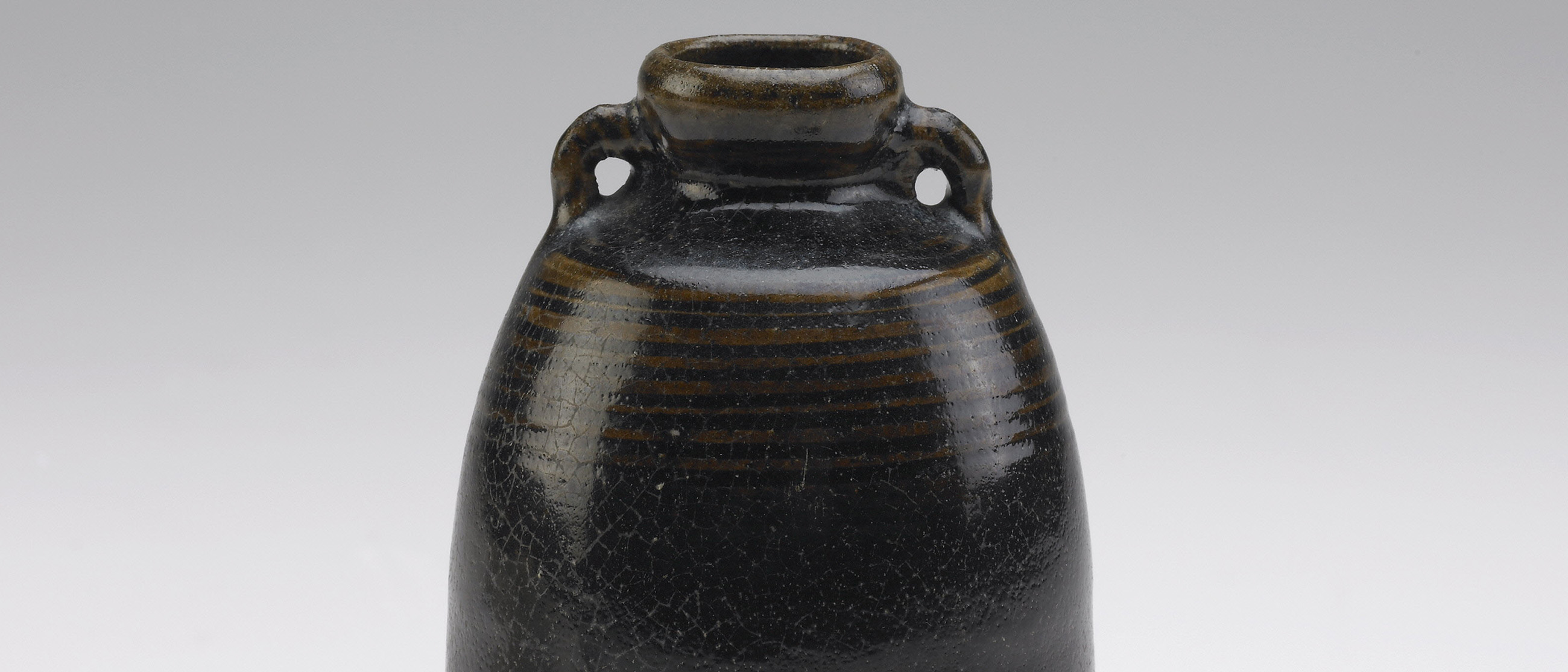BROWN AND BLACK GLAZES (IRON GLAZES)
View all related objects in the collections
Iron oxide is the major colorant in stoneware glazes that range in color from yellow-brown to chocolate brown to brownish black. The deeper color is achieved by intentionally formulating the glaze with iron-bearing clay to increase the percentage of iron beyond that which produces a green tone (1–3 percent). For example, the medium-brown glaze used on late Angkor-period stonewares contains an average of 9.5 percent iron (Fe2O3) (Hein 2001, 304).
Potters in Mainland Southeast Asia were surely encouraged to modify their glazes to achieve darker tones following the arrival of Chinese brown- and black-glazed wares of the Southern Song period (1127–1279), including bowls from the Jian kilns in Fujian and Jizhou kilns in Jiangxi and storage jars from kilns in Guangdong. The question of when brown glaze began to be used at Angkorian kilns (in northwestern Cambodia and southern Northeast Thailand) is still being debated. (It is curious that no brown-glazed Chinese wares were reported from the royal palace site at Angkor—a matter of royal taste or the archaeologist's sorting? Dupoizat 1999). Potters at northern Vietnamese kilns made vessels with chocolate-brown glaze from the twelfth century on. Brown-glazed bottles and brown-glazed jars with four lugs were produced at the Sawankhalok kilns by the early fifteenth century at the latest (Brown 2004). By the mid-fifteenth century, Maenam Noi kilns were making brown-glazed jars as well. Brown-glazed jars were manufactured at San Kamphaeng, but the chronology of this long-lived kiln has not been clearly established. Other kilns in Lan Na, including those at San Sai and Ban Nong Rong, also used brown glaze. Later, in Northeast Thailand, the kilns along the Songkhram River produced jars with a thin, streaky caramel-brown glaze.

